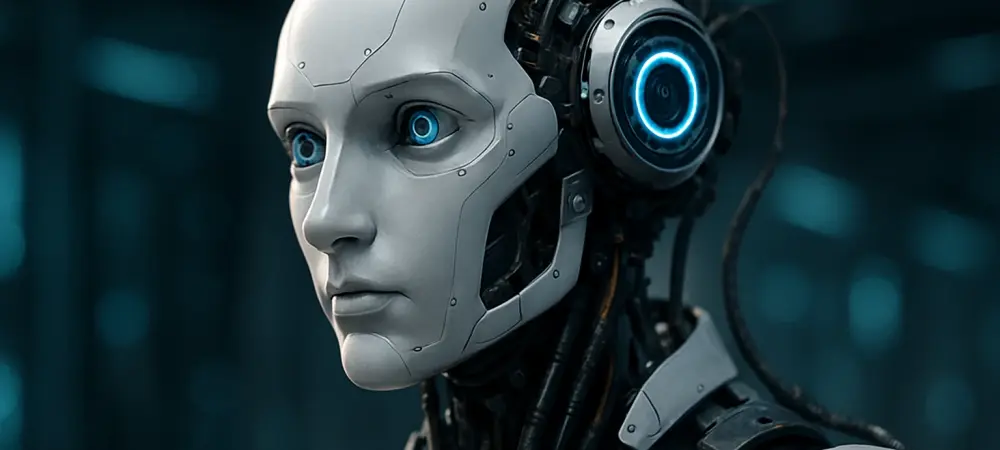Imagine a factory floor where robots not only assemble products but also inspect every detail with precision far beyond human capability, adapting instantly to new tasks without extensive reprogramming. This is no longer a distant vision but a reality driven by the integration of AI vision technologies into industrial robotics. The transformative power of AI vision is reshaping automation by enhancing efficiency, adaptability, and accuracy in industrial settings. As manufacturing races toward greater automation, this trend stands as a cornerstone for meeting modern demands. This analysis delves into current market trends, real-world applications, expert perspectives, and the future potential of AI vision in robotics, offering key takeaways for industries navigating this technological shift.
The Rise of AI Vision in Industrial Automation
Market Growth and Adoption Trends
The adoption of AI vision technologies in industrial robotics is accelerating at a remarkable pace, reflecting a broader shift toward intelligent automation. According to recent industry reports, the global market for AI in robotics is projected to grow significantly from this year to 2027, with market size estimates indicating a compound annual growth rate of over 30%. This surge is fueled by the increasing need for precision and efficiency in manufacturing processes across various sectors. A notable statistic reveals that over 60% of large-scale manufacturers have already implemented AI vision systems for tasks such as quality control and material handling. These systems are becoming indispensable in industries like automotive and electronics, where even minor defects can lead to substantial losses. The rapid uptake underscores a growing recognition of AI vision as a solution to longstanding automation challenges.
This trend is not merely about numbers but also about strategic transformation. Companies are investing heavily in these technologies to stay competitive, with many prioritizing AI vision as a key component of their digital transformation strategies. The momentum suggests that adoption will continue to expand, reaching smaller enterprises as costs decrease and accessibility improves.
Real-World Applications and Innovations
AI vision is already making a tangible impact through innovative applications in industrial robotics. A prominent example is the partnership between a leading robotics company and a California-based AI technology firm, which has integrated advanced vision capabilities into simulation and programming software. This collaboration has enabled robots to perform complex tasks like defect detection and item-picking with unprecedented accuracy.
Specific use cases highlight the versatility of these technologies. In quality inspection, AI vision systems can identify minute flaws in products that traditional methods often miss, ensuring higher standards on production lines. Similarly, in sorting and depalletizing operations, robots equipped with AI vision can handle varied items efficiently, overcoming limitations of older automation tools that struggled with adaptability.
These innovations address critical pain points in industrial settings. By reducing the time needed to train robots for new tasks, such systems allow for quicker responses to market changes. The ability to learn and adapt independently further enhances their value, making them a game-changer for manufacturers seeking to optimize operations without constant human oversight.
Industry Perspectives on AI Vision Integration
Expert opinions shed light on the profound implications of merging AI vision with industrial robotics. Industry leaders emphasize that this integration drastically cuts development time, with some tools reducing it by as much as 80% through pre-trained models and user-friendly interfaces. Such advancements make sophisticated technology accessible to a broader range of operators, even those without deep technical expertise.
However, challenges remain a topic of discussion among professionals. Scalability is often cited as a hurdle, as deploying AI vision systems across diverse production environments can be complex and resource-intensive. Additionally, workforce adaptation poses a concern, with experts noting the need for training programs to bridge skill gaps and ensure smooth implementation of these technologies.
Despite these obstacles, the consensus is optimistic about the potential for AI vision to revolutionize industrial efficiency. Thought leaders predict that continued innovation will drive down costs and simplify integration, paving the way for widespread adoption. Their insights underline a shared belief that this trend will catalyze a new era of productivity and creativity in manufacturing.
Future Outlook for AI Vision in Robotics
Looking ahead, AI vision systems in industrial robotics are poised for remarkable evolution. Advancements in self-learning algorithms are expected to enable robots to handle increasingly complex tasks with minimal human input, expanding their applicability across diverse industrial functions. This progression could redefine operational standards in manufacturing and beyond.
Anticipated benefits include significant cost reductions and enhanced precision, which will likely attract more industries to adopt these systems. Yet, challenges such as data privacy concerns and the complexity of integrating AI vision with existing infrastructures must be addressed. Overcoming these barriers will be crucial to unlocking the full potential of this technology.
The broader implications are far-reaching, with AI vision potentially transforming global supply chains by streamlining processes and improving product quality. As industries embrace this shift, manufacturing standards could see a dramatic uplift, fostering greater competitiveness on a worldwide scale. The trajectory suggests a future where intelligent automation becomes the norm, reshaping economic landscapes.
Conclusion: Embracing the AI Vision Revolution
Reflecting on the journey, the growth of AI vision in industrial robotics marks a pivotal shift, with market expansion, innovative applications, and expert endorsements highlighting its significance. Industry perspectives underscore both the promise and the hurdles, while future outlooks point to groundbreaking possibilities. This trend carves a path toward unprecedented automation innovation. As a next step, industries are encouraged to invest in scalable solutions and prioritize workforce training to harness these advancements effectively. Collaborations between technology providers and manufacturers emerge as vital for simplifying integration and addressing privacy concerns. By adopting AI vision strategically, companies position themselves to gain a competitive edge in an evolving landscape, ensuring they thrive amidst rapid technological change.

